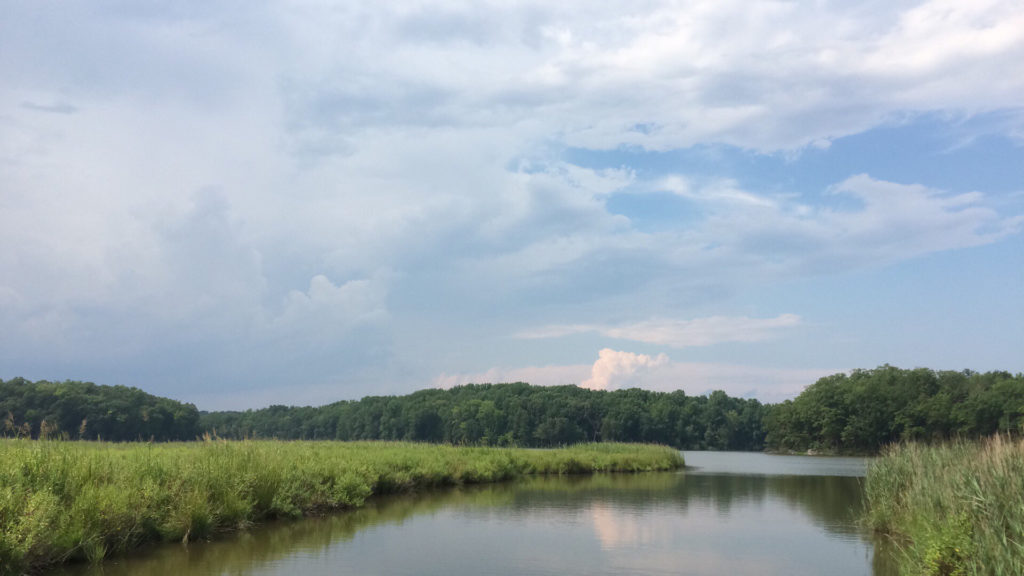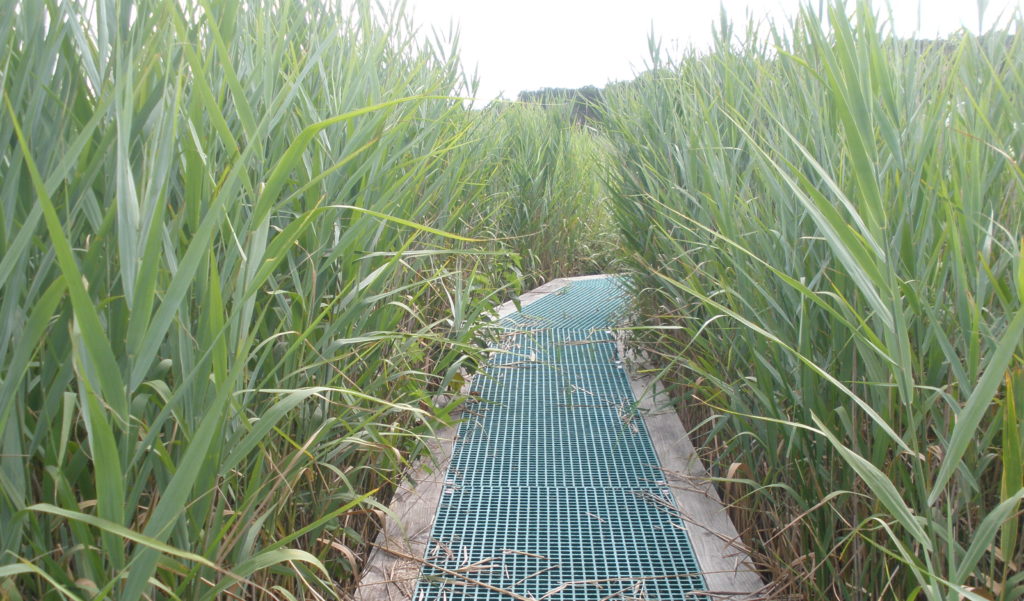Invasive Plants Can Boost Blue Carbon Storage
Posted by KristenM on October 1st, 2018
by Kristen Minogue

Some invasive plants like Phragmites australis, the light-brown stalks on this Maryland marsh, could more than double the ability of marshes and other coastal ecosystems to store blue carbon. (Credit: Gary Peresta/SERC)
When invasive species enter the picture, things are rarely black and white. A new paper has revealed that some plant invaders could help fight climate change by making it easier for ecosystems to store “blue carbon”—the carbon stored in coastal environments like salt marshes, mangroves and seagrasses. But other invaders, most notably animals, can do the exact opposite.
“We were aware of the effects of invasions on other facets of these habitats, but this was the first time we really delved into blue carbon storage,” said Ian Davidson, a marine invasions biologist at the Smithsonian Environmental Research Center (SERC) and lead author of the new study. While blue carbon has become a buzz word in climate change circles, it has not appeared in many conversations about invasive species, especially in the marine realm.
The paper, published Sept. 30, in Global Change Biology, is the first meta-analysis to look exclusively at marine habitats when tackling the issue of invasions and carbon storage. Previous carbon storage research has focused largely on terrestrial environments like forests. But marshes and mangroves can store carbon an estimated 40 times faster than forests. And over the past century, biologists estimate the world has lost 25 to 50 percent of its blue carbon habitats, with an additional 8,000 square kilometers disappearing every year. Understanding these ecosystems is critical as policymakers work to mitigate both climate change and the impacts of invasive species.
“It’s now part of global climate change solutions to get carbon credits in forests,” said co-author Christina Simkanin, also a marine biologist at SERC. “But for blue-carbon habitats, the marine version, that has been slower to materialize.”

...when the researchers crunched the numbers, they discovered invasive species do not fall into a single camp. When the most powerful plants invaded—the ones Davidson called “ecosystem engineers”—biomass skyrocketed. At a 117 percent boost, they more than doubled an ecosystem’s biomass and potential to store carbon. The reason, the authors said, is because most of those plants were similar to the species they usurped (a new kind of mangrove tree entering a mangrove forest, for example, or a reed like Phragmitesentering a salt marsh). Because the invaders grew larger and faster than the native species, the ecosystem as a whole could store more carbon.
“When you have these essentially ‘ecosystem engineers’ come into the system, not only are they helping build habitat, they seem to be doing it more aggressively and more efficiently,” Davidson said.

Invasive Phragmites reeds encroach on a boardwalk in a Maryland marsh. On this marsh, biologists at the Smithsonian Environmental Research Center have been conducting climate change experiments for more than 30 years. (Credit: Gary Peresta/SERC)
More at .... Shorelines » Blog Archive Invasive Plants Can Boost Blue Carbon Storage - Shorelines
This comment has been removed by a blog administrator.
ReplyDelete